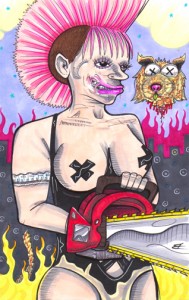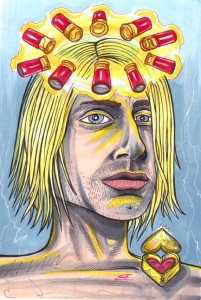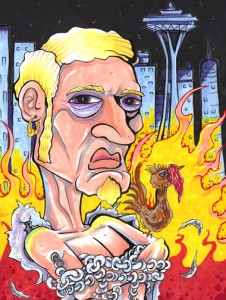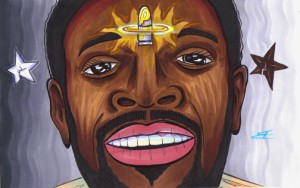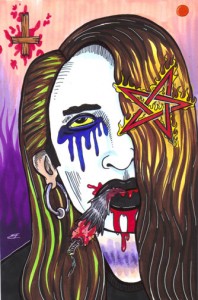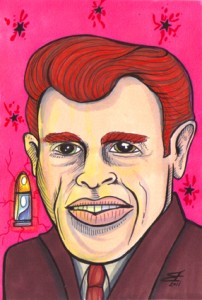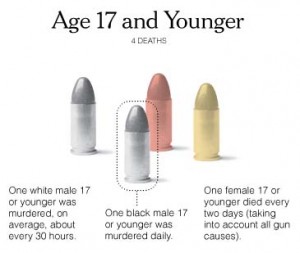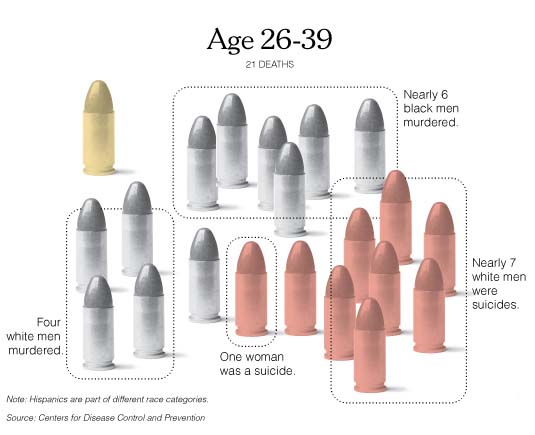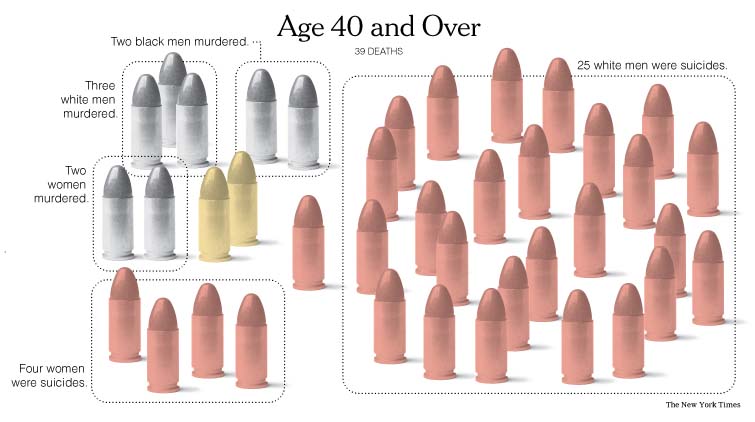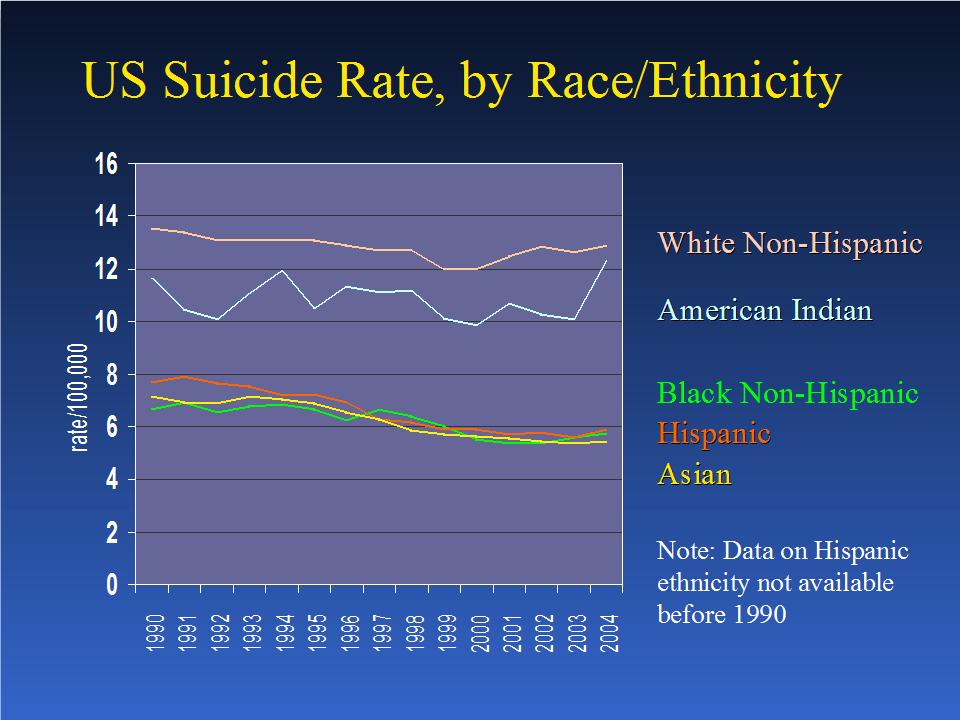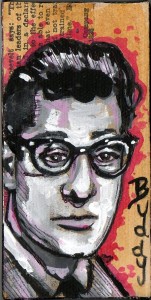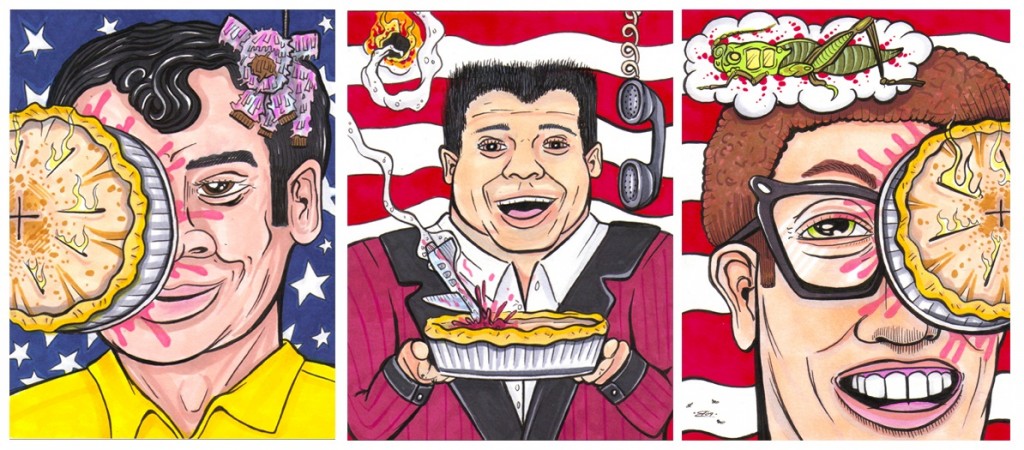Wendy O Williams’ stage presence was so sexy, it caused temporary impotence. A classic evening with the Plasmatics in the 80s included Wendy dangling TNT over the audience’s head before blowing cars up onstage. TVs were smashed to bits, guitars chainsawed in two, microphones were deepthroated, Wendy O mounted speakers for some orgasm-inducing feedback, and the occasional cover was thrown in for ironic effect—such as Tammy Wynette’s “Stand By Your Man.” Dubbed “pornography rock,” the act saw the destruction of nearly everything onstage, and in the end, their lead singer. Wendy O shot herself in the head on April 6, 1998.
April of 1998 happened to be a curiously deadly month in the music world. Rozz Williams hung himself on the 1st, Rob Pilatus floated his pill-raft down Booze River on the 2nd, virtuoso Cozy Powell crashed his Saab while talking on a clunky 1990s cell phone on the 5th, and Wendy O Williams shot herself on the 6th—the same night that Tammy Wynette passed away from a blood clot in her lung. To top it off, Paul McCartney’s wife, Linda, succumbed to metastasizing breast cancer on the 17th.
As it happened, a series of ferocious tornadoes ravaged the South during that month, killing 32 people in Birmingham on April 2. On the 16th, ten freak twisters ripped Middle Tennessee apart, one of them tearing through downtown Music City. 12 people were killed that day. I suppose Wendy O had plenty of company in the celestial waiting room. According to her suicide note, she’d made her appointment early.
I have to admire Wendy O Williams for her ovaries of steel. For the “Queen of Shock Rock,” femininity meant sticking e-tape on your tits, pumping some iron, and then slapping the nearest bystander with your swollen clit. When Wendy wanted her woo woo wazzled, she sought out the biggest, baddest, hardest, nastiest men she could wrap her sweaty legs around. It wasn’t an invitation to sweet-lovin’ with this chick—it was a ball-busting challenge. On ”I Love Sex (and Rock n’ Roll)” she sang:
Don’t waste my urges, no I’m bored to death
Well you can save your breath
You’re fading fast
Driven by hunger, just ain’t gettin’ my fill
Don’t know the reason why
That’s who I am
What kind of man could handle such a scrotum-shredding bitch? “Captain Kink” Rod Swenson, that’s who. After meeting at his New York club, he immediately asked her to be his wife. While they never tied the knot—other than some pleasant B&D action—they remained partners for the better part of Wendy’s life, which lasted much longer than one might have expected.
It’s one thing for a woman wearing a Mohawk to slap a groping cop in the face—which she did. It’s another thing entirely to climb out of a convertible rocketing through the desert onto a rope-ladder dangling from a small airplane and fly off over a cliff—which she also did, supposedly with no safety equipment. That makes me want to dig up her corpse and plant a big, slobbery smooch on her rotten jaw.
To say that Wendy O had a morbid sense of humor would be an understatement. Her song “Brain Dead” sounds like it was written by Dr. Seuss while huffing paint in a fallout shelter and waiting for the New World Order to come confiscate his crayons:
Dragged off in the dead of night
Disappear without a sight
For global peace is what we pray
As long as things are done our way
Disagree or acting rude
We will chop you up for food
The song comes from a concept album recorded in 1987 called Maggots: The Record, which chronicles a catastrophic attempt at geo-engineering. Scientists developed a breed of maggots which would eat all the trash on earth, and then die. But they just kept eating everything, turning humans into zombies before wiping them out completely. When asked about the violence of her artistic expression, Wendy responded, “Talk about violence—I don’t do anything violent.
“Talk about violence, what’s going on in Nicaragua? What’s going on in El Salvador?” she railed. ”That’s violent. What are they doing to the planet with chemicals and acid rain? That’s violent. What are people doing to each other? Raping. That’s violent.
“I’m striking out at an icon that has no life. There’s a big difference between what has life and what doesn’t. I mean, I’ve been a vegetarian for 16 years.”
The Plasmatics couldn’t peddle their schtick forever, and when their heyday was over, Wendy O retired with Swenson to a cabin nestled in the woods of Connecticut. She spent the rest of her life in seclusion, being a friend to animals and contemplating the Void, which earned her the nickname “The Squirrel Lady.” In fact, it appears that feeding acorns to squirrels was the last thing she did before feeding herself to the worms on April 6, 1998. Her body was found in the woods by Swenson when he returned home from shopping. The pistol was laying in a bed of dead leaves. Her suicide note read:
The act of taking my own life is not something I am doing without a lot of thought. I don’t believe that people should take their own lives without deep and thoughtful reflection over a considerable period of time. I do believe strongly, however, that the right to do so is one of the most fundamental rights that anyone in a free society should have.
For me much of the world makes no sense, but my feelings about what I am doing ring loud and clear to an inner ear and a place where there is no self, only calm.
Love always,
Wendy
Swenson said of the love of his life:
“She had been talking about taking her own life for almost four years. She was at home in the peak of her career, but found the more ordinary ‘hypocrisies of life’ as she called them excruciatingly hard to deal with. In one sense she was the strongest person I have ever known, and in another, a side which most people never saw, the most vulnerable. She felt, in effect, she’d peaked and didn’t care to live in a world in which she was uncomfortable, and below peak any longer.
“Speaking personally for myself, I loved her beyond imagination. She was a source of strength, inspiration, and courage. The pain at this moment in losing her is inexpressible.”
That people will sit down one day, get their affairs in order, and blow their brains out is absolutely baffling to me. I’ve know a number of men to do so. In fact, there were recently two public suicides down the road from my hometown.
In the first instance, a young man in his early 20s walked into Wal-Mart where his ex-girlfriend was eating with her new beau. He told her that he was going to kill himself, walked back into the space between the automatic doors, and then shot himself in the face in front of everybody.
A few days later, a 77 year-old man parked his car in front of the local hospital, carefully pinned a note to his shirt,* tasted the barrel, and then pulled the trigger.
For loved ones, self-inflicted pistol wounds are the ultimate act of selfish abandonment. For gossiphoppers, it is a fresh bit of fat to chew, and for custodians—a nasty mess to clean.
For Wendy O Williams, suicide was a final act of destructive performance art. April of ’98 was a hot month for dead rock stars, and she wasn’t about to be upstaged by some nancy boy like Rozz Williams.
© 2011 Joseph Allen
A trailer for
Wendy O Williams and the Plasmatics:
10 Years of Revolutionary Rock n’ Roll
featuring a montage of classic Wendy O footage
*[corrected from: "laid his note on his lap"]
